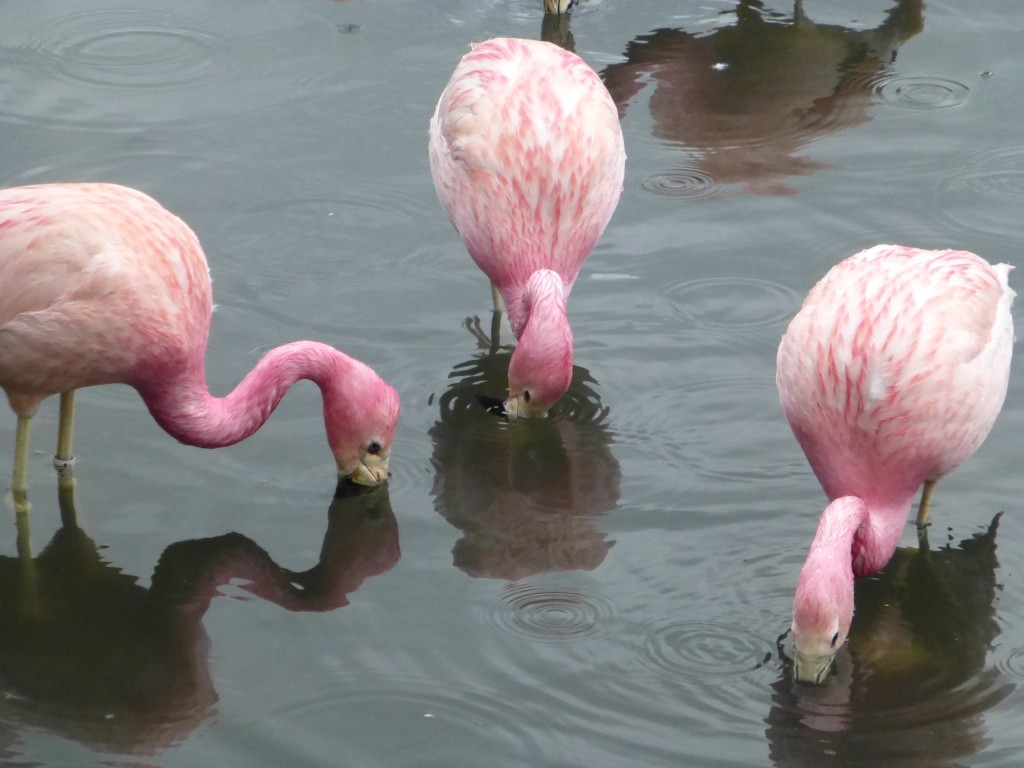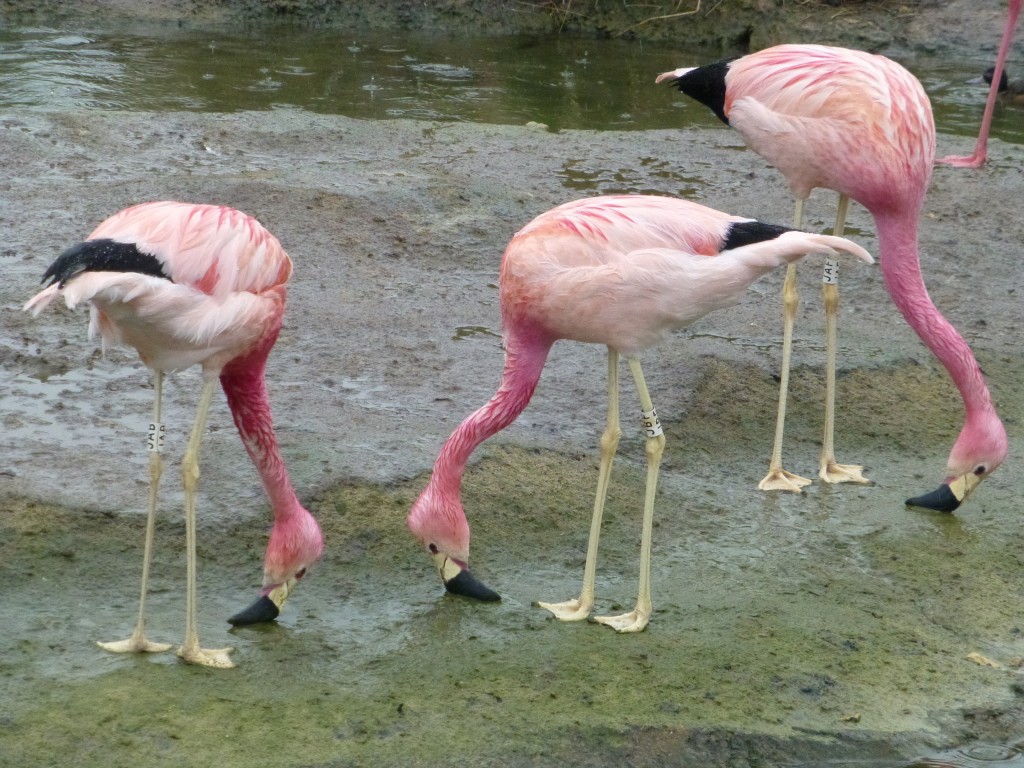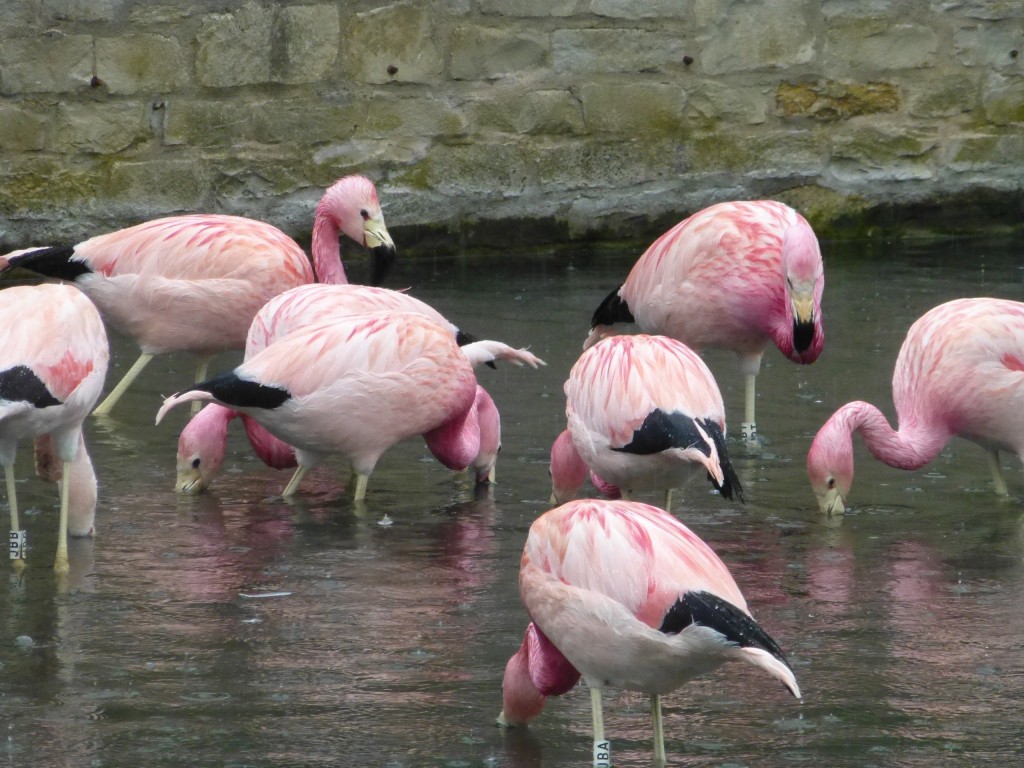Happy Andeans!
Just a brief post about some interesting behaviour, inspired (!?) by the rain of late. Not the nicest of weather to be out doing behavioural research but it can bring out the best in the birds, believe it or not!

I am not including the Andean flamingo flock in the behavioural observations that I am doing this year because they are too steady and too calm and too relaxed. And when you're looking at vigilance and responses to things going on around them, the Andeans are far too happy with life to give any good data! However, I am still recording their relationships, as part of the longer term study across all of Slimbridge's flocks, and this does lead me in to swinging past their enclosure several times a day (even if I am not devoting loads of time to watching them intently).

After a particularly long and intense downpour, the Andean flamingos were exhibiting several interesting foraging patterns that we quite engaging to watch. You are probably thinking that I am off my rocker and this is just another load of "flamingos standing around videos" but actually it was a lovely demonstration of why the birds are so well kept at Slimbridge. i) They are in natural-enough enclosures to behave, well, naturally and ii) they give visitors a real insight into how wild flamingos fill their day. Even if you have to enjoy this in the monsoon...
Check the photo above, of the three birds on the sand; they are actually eating the microscopic algae held in between the grains of sand. That's pretty cool. The Andean flamingo is one of the most highly evolved species, with a very refined beak structure. Hence why it can feed so precisely.

And then with the birds in the water, later on in the day, something had clearly flowed into their pool that had really taken there fancy. If flamingos could concentrate specifically on one task, then these birds were doing just that. Look closely at any feeding flamingo (and the Andeans are good for this, because of how close they will let people observe them) and you will see the water coming out of the sides of their beak is crystal clear. There are a couple of video clips below that show the birds enjoying themselves after the latest rain shower. I especially love the young Chilean's excited foot stamping next to Mr James's more refined approach to seeking his dinner!
Remember to bring your umbrella next time for some awesome flamingo spotting opportunities :-)
https://www.youtube.com/watch?v=YxMuALpTXuc
https://www.youtube.com/watch?v=WOXjR3Hg6o4



